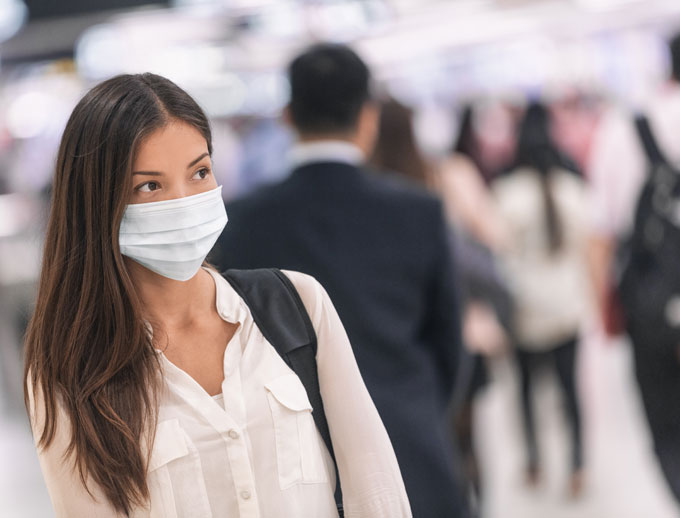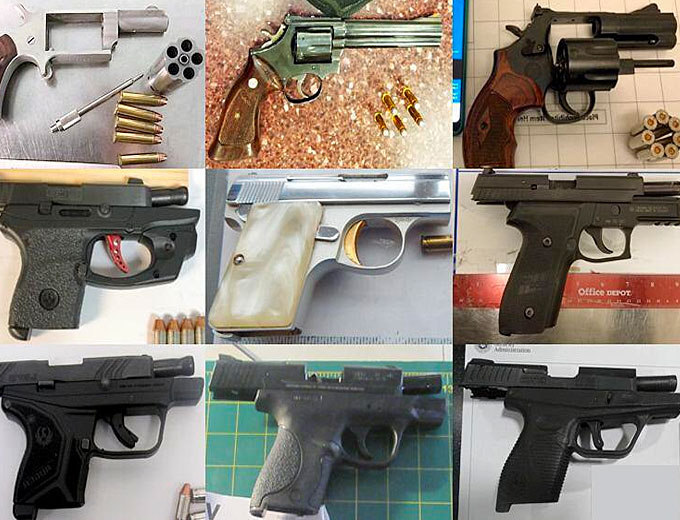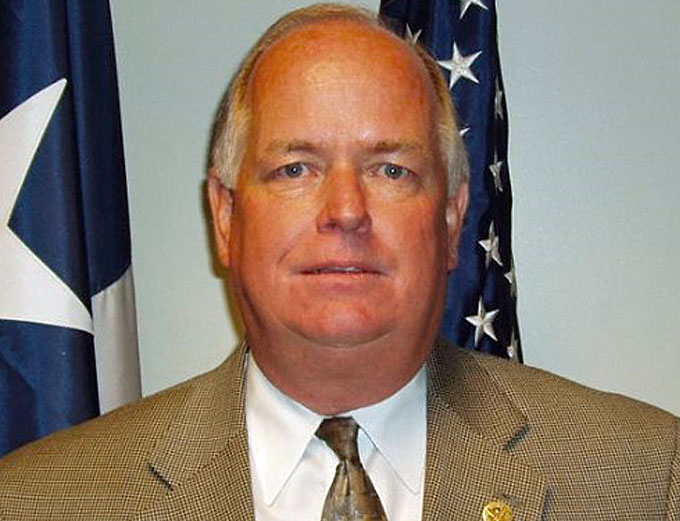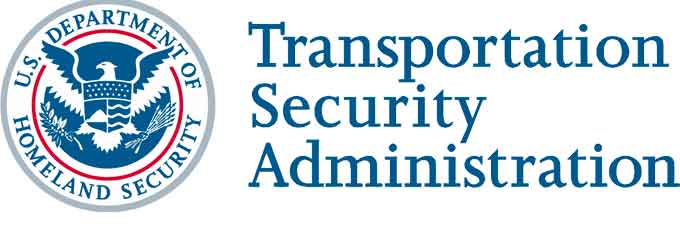
By the TSA
The Transportation Security Administration (TSA) understands that the novel coronavirus (COVID-19) is on the minds of travelers and the general public.
We continue to work with the Centers for Disease Control and Prevention (CDC), and state and local health departments to monitor local situations as well as the health and safety of our employees and the traveling public.

While we have seen a drop in travelers, we understand that many still choose to fly for a variety of reasons.
Throughout this crisis, our commitment remains to protect the nation’s transportation systems to ensure freedom of movement for people and commerce.
If you choose to fly, or are getting ready to fly in the near future, read below about what TSA is doing to keep you, your family, and your community safe.
Your Health is Paramount
First and foremost, travelers who believe they may have been in contact with a person who tested positive for COVID-19 should consult with their healthcare provider.
If you choose to fly, follow the guidance issued by the CDC and practice good hygiene, such as washing your hands with soap and water for at least 20 seconds.
We recommend travelers do this before and after the security screening process.
Clean Checkpoints
.@TSA is taking additional efforts to clean bins, but more importantly, travelers are encouraged to follow CDC guidelines and wash their hands before and after completing the security screening process. Here TSA officers at @ATWairport are seen cleaning checkpoint bins. pic.twitter.com/fwkVS5n4rR
— TSAmedia_LisaF (@TSAmedia_LisaF) March 16, 2020
TSA has issued guidance to frontline employees to conduct routine cleaning and disinfecting of frequently touched surfaces and security screening equipment at the TSA security checkpoint.
TSA is also taking additional efforts to clean bins.
Most importantly, travelers are encouraged to follow CDC guidelines to help stay safe.
You may wear a face covering if you choose, but you should be prepared to adjust your mask so that a TSA officer can visually confirm your identity during the checkpoint screening process.
ID Changes
If your driver’s license or state-issued ID expired on or after March 1, 2020, you may still use it as acceptable identification at the checkpoint.
TSA will accept expired driver’s licenses or state-issued ID a year after expiration or 120 days after the duration of the emergency, whichever is longer.

Due to circumstances resulting from the COVID-19 pandemic and the national emergency declaration, the Department of Homeland Security is extending the REAL ID enforcement deadline by a year.
The new deadline for REAL ID enforcement is October 1, 2021.
Visit the TSA REAL ID webpage for more information.
TSA TRAVEL TIPS During Stressful Times
Know what is in your bag before you get to the checkpoint!

The Transportation Security Administration (TSA) has stopped 17 guns so far this year at Austin-Bergstrom International Airport (AUS), including three in one day by three different diligent and dedicated officers.
During this stressful time in our nation, passengers are reminded to be sure they do not have prohibited items in their bag.
On March 9th at 4:35 a.m. a TSA officer stopped a 9 MM Glock, loaded with seven rounds, one chambered.
At 8 a.m. another TSA officer stopped a second 9 MM Glock loaded with nine rounds. And at 4:03 p.m. a third TSA officer stopped a Ruger with 12 rounds.

“The diligence of our officers during these trying times,” said Federal Security Director Michael Scott, “continues to be a testament to their dedication to keep the traveling public safe.”
Last year TSA officers in Austin stopped 79 guns, in Midland 30, in Lubbock, 21, Amarillo 15, San Angelo 5, and 1 each in Killeen-Ft. Hood, Waco and College Station.
TSA officers at airports across the state and country continue to intercept guns even as passenger volumes plummet.
Firearms may be transported in your checked bags if they are declared to the airline at check-in, unloaded and placed in a locked, hard-sided case.
(Thinking of traveling with a firearm? See this short informative video to learn more. Courtesy of TSA and YouTube.)
“If a gun is brought to the TSA screening checkpoint, the passenger will face a civil penalty that can exceed $13,000 and that fine is imposed even if you are not arrested or cited by our law enforcement partners,” noted Sari Koshetz, a spokesperson with the Transportation Security Administration.
“In order to maintain social distancing and not have to face a bag search, passengers are reminded to know precisely what is in their bags before leaving for the airport.”
In addition to firearms, TSA officers stop literally tons of VAP (Voluntarily abandoned property consisting of prohibited items such as knives and brass knuckles) and they intercept tens of thousands of pounds of HazMat (hazardous materials such as flammable and corrosive household chemicals) every year as well.
(Every day, TSA officers discover a wide range of strange, weird and dangerous items. Here’s a collection of the most unusual prohibited items that were found in 2018. Courtesy of the TSA and YouTube.)
The Hazmat cannot travel in your carry-on or your checked bag.
“During a time when passengers want to move through the checkpoint as quickly as possible to maintain that social distancing, being sure that your bag does not have to be opened by one of our officers to remove a prohibited item is paramount,” Koshetz stressed.
Practicing the 3-1-1 carry-on rule and leaving home without your prohibited items will facilitate a quick checkpoint experience and reduce your travel stress.
Do note that hand sanitizers are an exception to the 3.4 ounce or less rule and up to 12 ounces are allowed, but may be subjected to additional screening.
(You are allowed to bring a quart-sized bag of liquids, aerosols, gels, creams and pastes through the checkpoint. These are limited to 3.4 ounces (100 milliliters) or less per item. This is also known as the 3-1-1 liquids rule. Courtesy of the TSA and YouTube.)
Another stress reliever and good hygiene practice is to place everything that is in your pockets or clipped to your waistband into your own carry-on bag before you even get to the checkpoint.
That includes your belt, wallet, coins and phones. Forgetting to remove these items might result in a patdown when you alarm the screening equipment.
Just put everything into your bag with the exception of electronics larger than a cell phone unless you are in the TSA Precheck program and then you can leave those in your bag as well.
Stay Informed
 There is no doubt that many continue to have questions about the actions TSA, DHS, and the federal government are taking to protect people during this difficult time.
There is no doubt that many continue to have questions about the actions TSA, DHS, and the federal government are taking to protect people during this difficult time.
Learn more and stay informed with the following resources:
- CDC Tips for Travelers
- DHS COVID-19 Protecting Air Travelers Webpage
- TSA Coronavirus Information
- FEMA Coronavirus Response
- Coronavirus.gov
- Government Response to Coronavirus
To Learn More, please visit https://www.tsa.gov/blog/2020/04/21/traveling-during-covid-19-pandemic
AST strives to meet a 3 STAR trustworthiness rating, based on the following criteria:
- Provides named sources
- Reported by more than one notable outlet
- Includes supporting video, direct statements, or photos

















